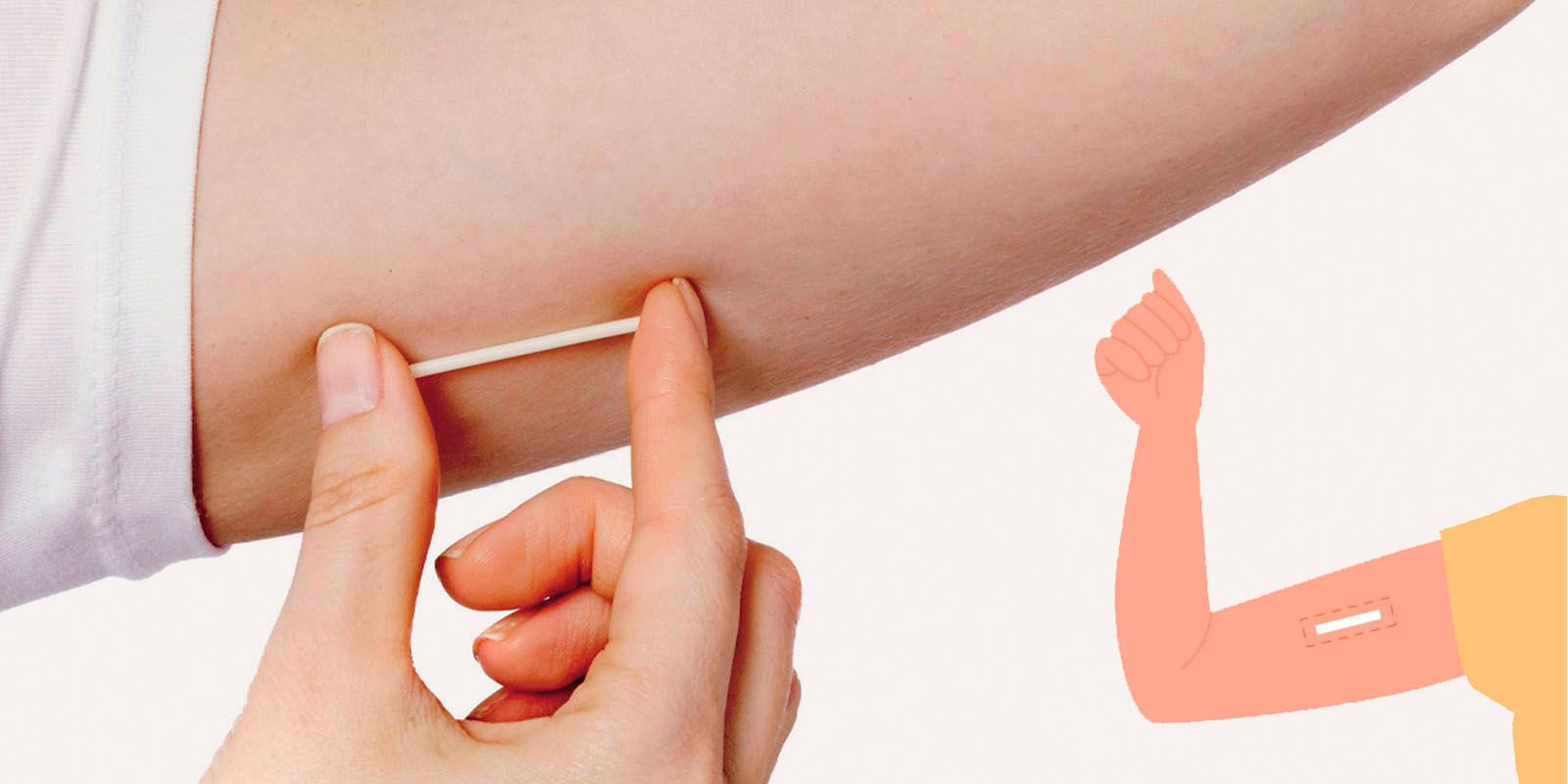
Contraceptive Implant (The Rod)
WHAT IS THE CONTRACEPTIVE IMPLANT?
The contraceptive implant, often called ‘the rod,’ is a small flexible plastic rod that contains a progestogen hormone called etonogestrel. It is inserted under the skin on the underside of your upper arm, where it slowly releases a small amount of this hormone over 3 years. The contraceptive implant used in Australia is called Implanon NXT.
HOW DOES IT WORK?
The contraceptive implant prevents pregnancy by stopping eggs from being released from the ovary (ovulation). It also increases mucus thickness in the cervix, making it hard for sperm to travel through and fertilise an egg.
HOW LONG DOES IT LAST?
The contraceptive implant is effective for 3 years, but you can have it removed earlier if you wish.
HOW EFFECTIVE IS IT?
The contraceptive implant is a very effective contraceptive method and is 99.95% effective at preventing pregnancy.
WHO CAN USE THE CONTRACEPTIVE IMPLANT?
The contraceptive implant is suitable for most people to use. Your doctor will be able to help you decide if it is right for you. There are situations when it is not suitable. These include the following:
- If you might already be pregnant
- If you have had breast cancer or cancer of your reproductive organs
- If you have severe liver disease
- If you have abnormal vaginal bleeding and the cause is not known
- If you are taking certain medications which may interfere with the action of the implant
ADVANTAGES OF THE CONTRACEPTIVE IMPLANT
- It gives you three years of highly effective contraception with no need to do anything daily
- It gives you contraceptive cover straight away if you have it inserted in the first 5 days of your cycle
- It can be removed if side effects are not acceptable or if you wish to become pregnant
- Your fertility returns to normal quickly after removal
- It is a good option for people who cannot or do not want to use oestrogen
- It is a low-cost method of contraception • It can be used when breastfeeding
DISADVANTAGES OF THE CONTRACEPTIVE IMPLANT
The disadvantages of the contraceptive implant are:
- It requires a minor procedure to insert and remove it
- It does not protect against sexually transmissible infections
POSSIBLE SIDE EFFECTS
The most common side effect of the contraceptive implant is changes to menstrual bleeding. These changes can include:
- No bleeding
- Infrequent spotting or bleeding
- Occasional light bleeding
- Prolonged or frequent spotting or bleeding
- Heavy bleeding
If you have side effects that you are unhappy with, talk to your doctor about it.
Other possible side effects include:
- Headache
- Breast discomfort
- Acne may develop or worsen, although some women may find that their acne improves
- Local reactions at the site of the insertion (see possible risks)
- Some people report weight changes or mood changes, but there is no evidence that the implant causes these
- Progestogen hormones can be associated with cysts on the ovary, but these types of cysts usually disappear spontaneously and rarely cause symptoms or need treatment
WHEN AND HOW IS IT INSERTED AND REMOVED?
The implant is inserted by a doctor or nurse who has been trained to do this procedure. The insertion is quite a simple procedure. First, an injection of a small amount of local anaesthetic will be used to numb the skin where the implant will be placed. Then the implant is inserted just under the skin on the underside of your upper arm. You will have a crepe bandage placed around that part of your arm for 24 hours to reduce swelling, bruising, and the risk of infection. The procedure takes about 10 to 15 minutes.
The implant is usually inserted in the first 5 days of your period. However, it can be inserted at other times if there is no chance that you could be pregnant. When it is inserted within the first 5 days of your period, it is effective immediately. When the implant is inserted at other times in your cycle, it will take 7 days to be effective. It is safe to have it inserted following the birth of a baby.
The implant is left in place for 3 years. After this time it will need to be replaced. It can be removed earlier if desired. Removal is usually a simple procedure that involves a small amount of local anaesthetic to numb the skin before a small incision is made and the implant removed.
POSSIBLE RISKS
Possible risks of insertion are unusual, and include:
- ruising, soreness, infection
- Possible scarring at the site of the insertion
- Possible difficulty removing the implant
- Allergy to the anaesthetic or to the implant itself
WHERE CAN I GET THE CONTRACEPTIVE IMPLANT?
The contraceptive implant is available through family planning clinics, including SHFPACT, as well as through GPs and gynaecologists.
FOR OTHER HEALTH SERVICES AND INFORMATION This email address is being protected from spambots. You need JavaScript enabled to view it. OR CALL 02 6247 3077
- Created on .
- Last updated on .